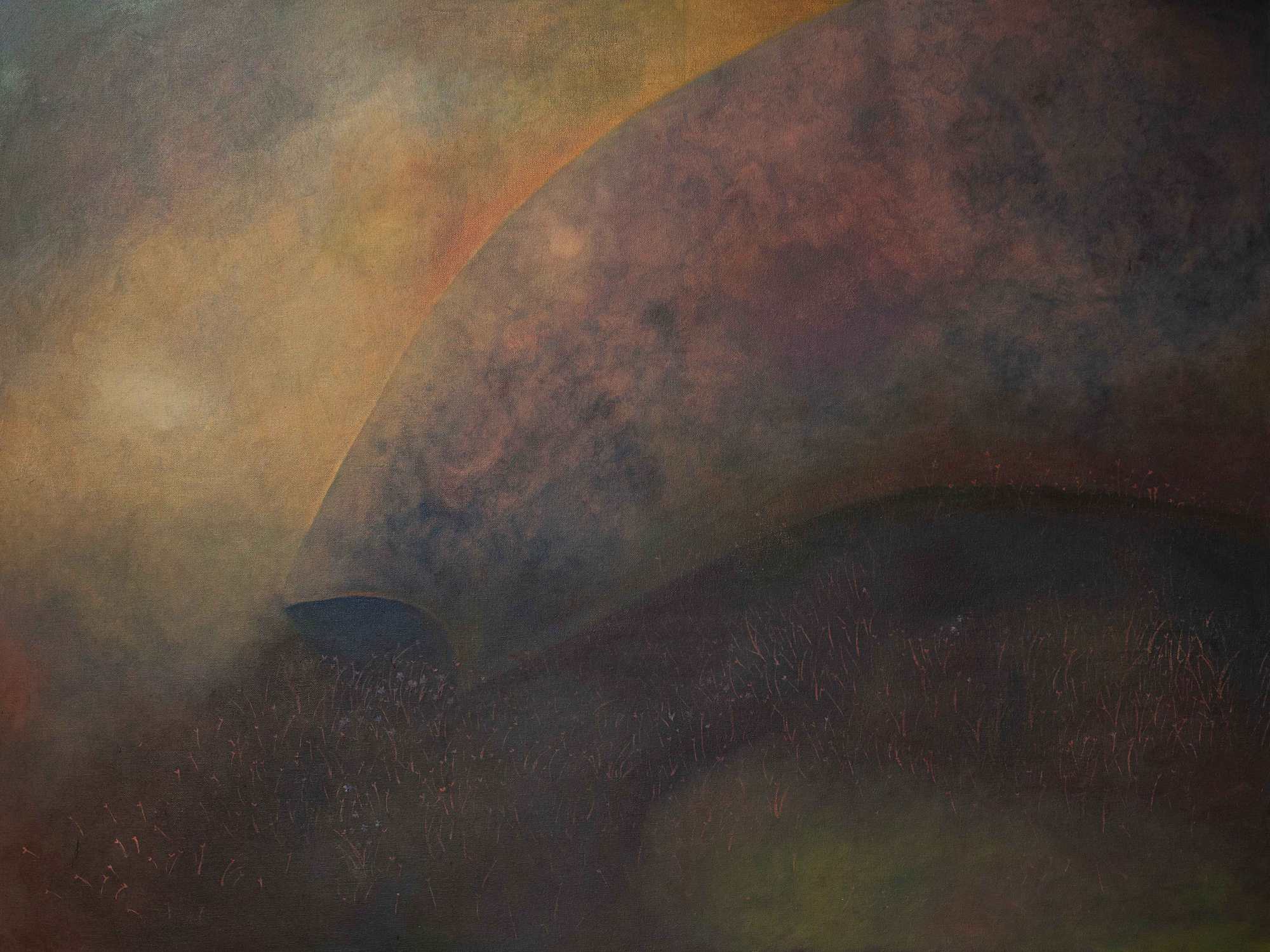#InConversation with Muskaan Singh
By Sanjana Srinivasan | May 19 2023 · 12 min. read
Muskaan Singh is a visual artist based in Delhi who employs watercolours, clay, terracotta, oils, and video in her practice, using a muted, and earthy colour palette. Through her work, she seeks to gain insight into the rationale behind the kind of value bestowed upon a certain image or object in society both, visually and poetically. Here, Sanjana Srinivasan speaks to Muskaan about her work and inspirations.
Sanjana - Hi Muskaan! Perhaps we could begin with the title of your recent OVR itself - Tracing Value. It was a phrase you had mentioned while you were explaining your practice and I thought it was the best way to encapsulate/describe your entire practice in a word or a line. But could you tell me what makes you seek to understand the value behind things? What do you mean by value?
Muskaan - When I am talking about the idea of “value,” it comes from my personal experience of day to day life, especially after my BFA. It encompasses various aspects such as my way of speaking (accent), the politics of knowledge, my sense of belonging, and my body. These prompts have led me to contemplate “value” on different levels. For example, in my recent project, Kothi, I explore the value and contribution of female bodies, farming and food preservation, and conservation of grain in rural landscapes. But I am also talking about the craft and technique of making these containers which I experienced in my childhood through my grandmother and the community around me.
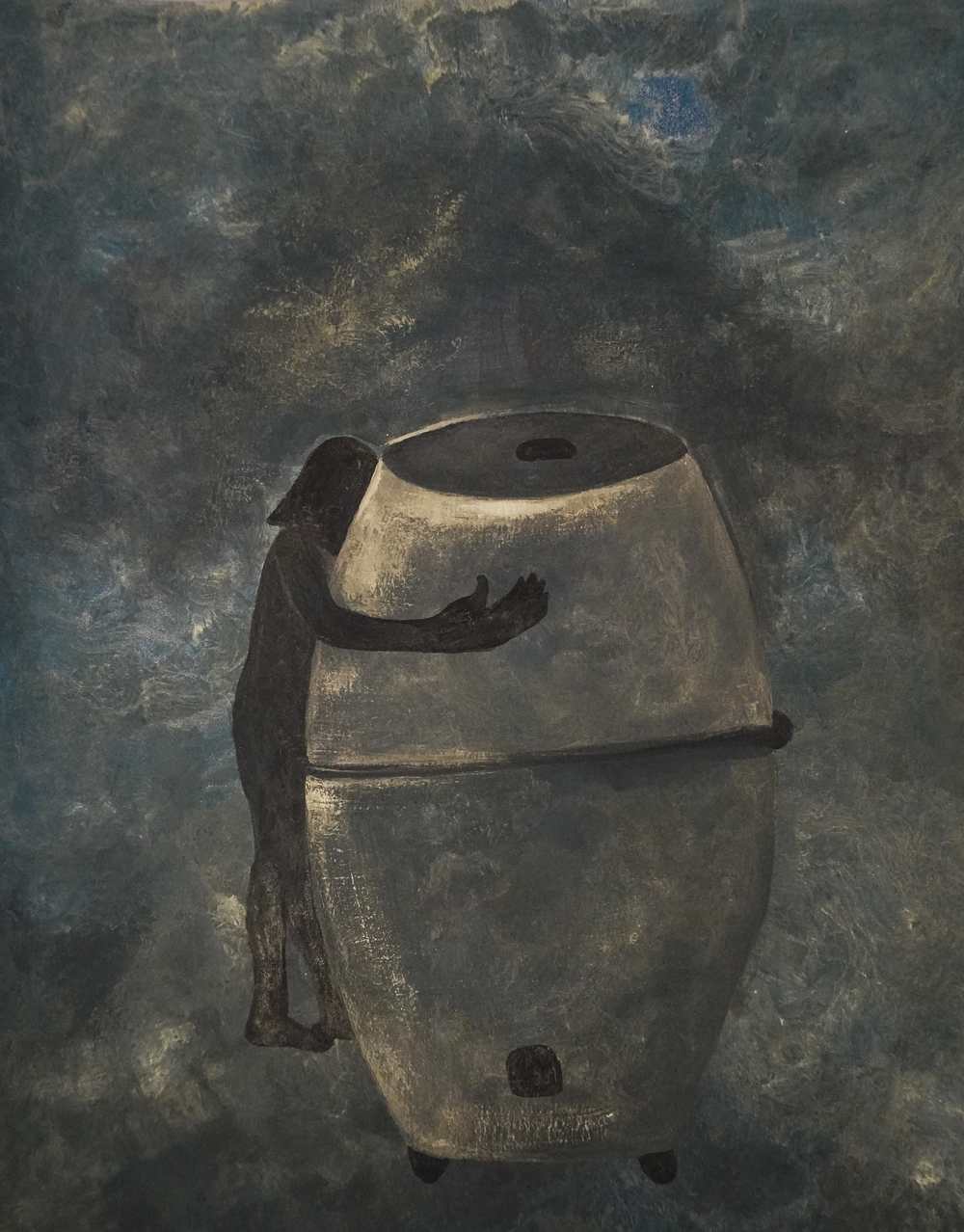

Kothi - X, 2023
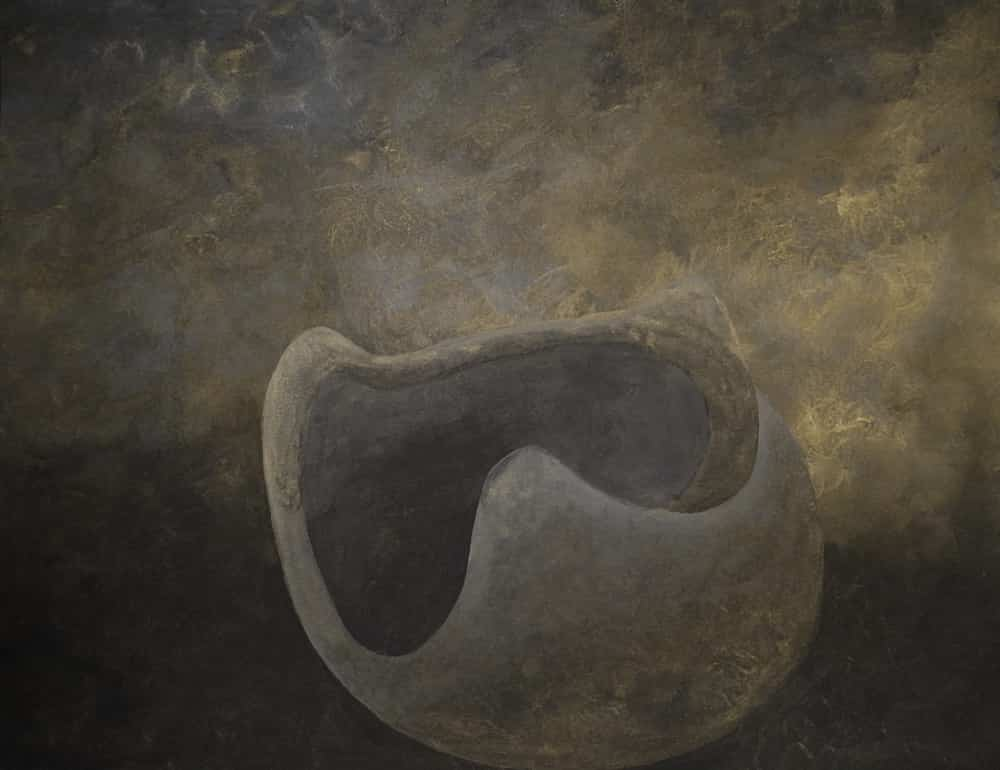

Kothi - XIII, 2023
Sanjana - Could we go back just a bit to talk about language and word politics or as you say, your “way of speaking.” What do you mean by that? Do you find language to be a barrier in communicating your ideas?
Muskaan - Yes, very much! I often experience nervousness when it comes to articulating my work through words. I'm still in the process of discovering the most fitting and effective language that allows me to express myself and explain my ideas. I am also uncertain about where exactly my work belongs and which medium would best capture its essence.
I believe language politics plays a significant role in shaping our sense of belonging and knowledge, thereby creating diverse systems of value. Language, originating from words, is a subject I constantly investigate as it allows me to express my experiences. The novel, Maila Aanchal, by Phanishwer Nath Renu deeply resonates with my life, evoking memories and traumas that continue to impact me today.
Exploring the politics of words and language accents reveals numerous layers of concepts such as caste, class, gender, and race. It sheds light on how power operates through language and how history is influenced by these dynamics. In my artwork, I employ metaphorical elements to delve into my personal experiences and the politics that have shaped my past and present.
Sanjana - Tell me more about your interest in Hindi and regional literature and how that influences your art practice?
Muskaan - The reading of various writers, particularly regional literature, enhances my understanding and awareness in relation to my artistic practice. Language, for me, becomes a highly abstract medium, similar to visual art (painting), where a single image can encompass multiple thought processes.
One of my initial projects, Suraaj, was inspired by the book Maila Aanchal. Set during the time of Independence in a small town called Mirganj in Bihar, the novel explores the impact of radio on people, the resulting reactions and controversies, as well as the deeply rooted religious beliefs of the villagers. Through his novel, Phanishwer aimed to capture these incidents, illustrating how the events in a small town reflected the atmosphere of the entire nation.
When Maila Aanchal was published in 1954, it sparked numerous debates, particularly regarding its regional nature. The novel's unique narrative style also demanded a new approach to criticism. While reading the novel, I noticed that there was no central point or main character driving the story. However, I found a strong connection with the novel due to its exploration of social structures, economic conditions, freedom, and the political landscape. These themes align closely with my work, which explores the politics of language, state, and individual identity.
The novel also stands out for its use of the Maithili language in a regional context, which in itself holds political significance. This linguistic choice sets it apart from other Hindi novels of that time. It made me realise that when someone utilises local language or culture, it goes beyond being merely local; it carries multiple meanings and speaks to broader contexts. For instance, the film Panchlait, based on Phanishwer's short story Panchlight, incorporates the term "Petomax," derived from the word "Petromax," to illustrate its connection to the local panchayat (village council). This element strongly resonated with me, as it represents collaboration and the shared experiences of time and space within a community. It highlights the simplicity of the concept, while the word itself carries the weight of history and the politics surrounding space.
In summary, exploring regional literature, such as Maila Aanchal, provides me with valuable insights that inform and enrich my artistic practice, particularly in terms of language politics, societal dynamics, and the interplay of history and culture.
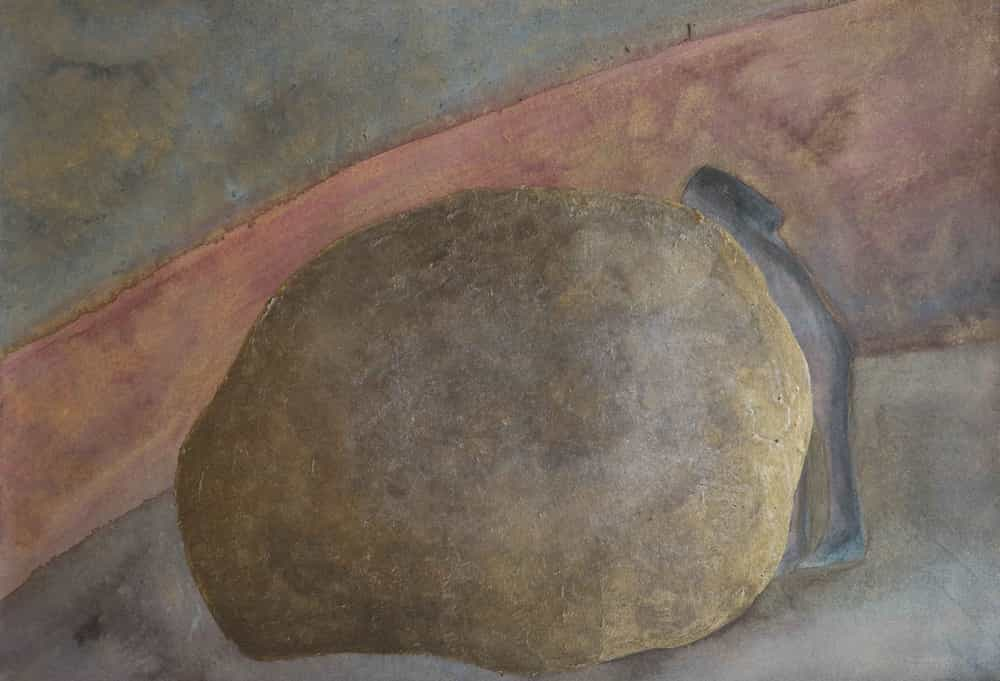

Boar 2, 2021
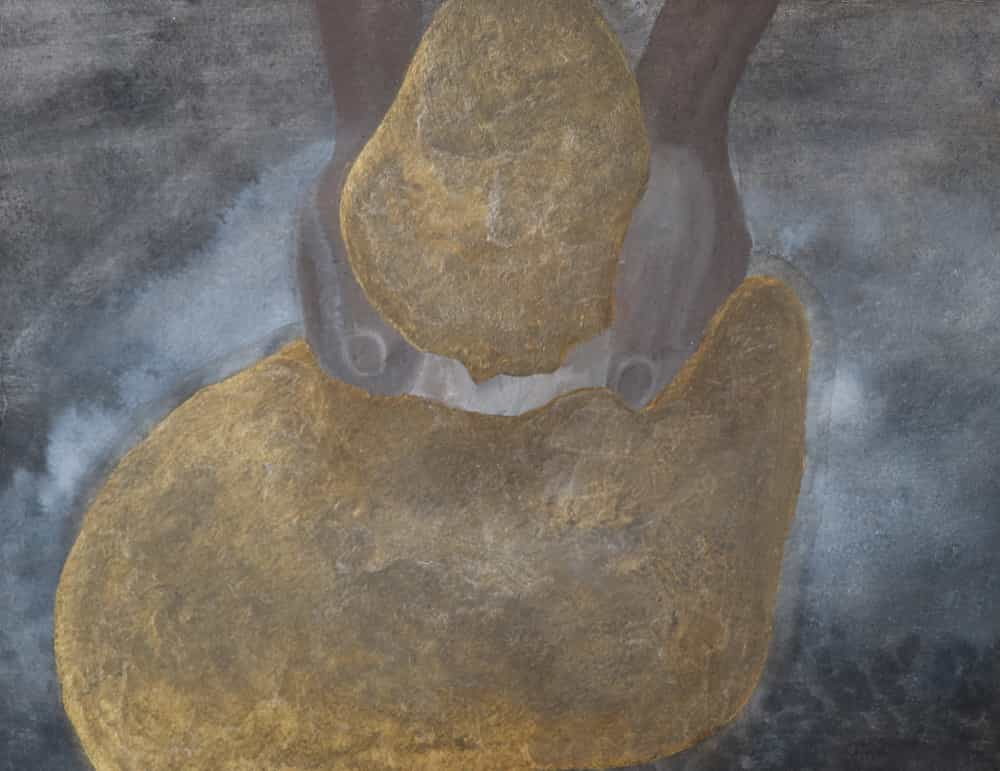

Kothi - III, 2021
Sanjana - And how do you think you translate these ideas visually? Your practice is in between an abstract and figurative space. And it's also quite minimal if I may say so or even otherwise in your own words, “like drawings.” They are not drawings in the sense of them referring to something, but more like preparatory, mental sketches.
Muskaan - Yes, that is very true. My practice is figurative and abstract but I don’t consider myself as an abstract artist, so minimal is the correct word really. My paintings are composed of a long and heavy thought process. As an artist, musician, or filmmaker responds to a situation, their resulting work can take the form of text, serving as an object, concept, or medium in itself. This interaction between different disciplines opens up new avenues for thinking and connecting with diverse ideas and forms. Similarly, reading poetry evokes a different understanding compared to reading prose. When visuals and text converge, or when the visual itself becomes the text, a new dimension emerges, giving rise to multiple interpretations and dialogues within social, political, and personal contexts.
My aim is to explore the significance of text in today's visual art and foster new dialogues through its unique language. It's like playing a game of hide and seek, where something is visible while something else remains hidden, yet both coexist. I deeply admire artists who delve into these phenomena.
For instance, Lawrence Weiner, whom I greatly admire, has embedded his texts in various contexts over the past five decades. Though he identifies as a sculptor rather than a conceptualist, he is among the trailblazers of the 1960s who presented art as a visual textual language. He defines his sculptural medium as simply ‘language + the material referred to,' emphasising that language itself is a material for construction.
Sanjana - Speaking about your practice, particularly the visual aspect of it, is there a reason you particularly give a very blurry feel to your works?
Muskaan - I am drawn to creating a sense of blurriness in my work, not in a literal sense, but rather by incorporating multiple layers of time and thought. My intention is to convey the depth and intricacy of my thought process while also inviting viewers to engage with the rich nuances within my art.
Choosing materials for my work is always a conscious decision based on the specific ideas I am exploring. However, my primary inspiration often stems from my childhood experiences. Memories of mud walls, grain stores, cooking stoves, plastered houses, mud platforms, and ladders resurface, even though they lacked a polished or perfected craftsmanship. These objects held their own inherent beauty. Although women played a vital role in these aspects of rural life, their contributions were often overlooked. These emotions, deeply embedded within me, find expression in abstract images that intertwine with various ideas. Consequently, my paintings emerge as a result of this interplay of colour and form.
Growing up in the village, I witnessed women living behind veils, which has left a lasting impression on my mind. The abstract representation of sleeping under a mosquito net appears hazily, like a blurry image, in my thoughts. These memories continue to shape my artistic expression, adding layers of abstraction and depth to my work.
Sanjana - What is your research process like for these projects?
Muskaan - My research process for these projects involves a retrospective examination of my concerns, which reveals a transition from rural to urban contexts. Recently, I have encountered psychological and sociological terms that aptly describe the emotions I am experiencing. Being displaced, I carry the cultural values of my original hometown, where I was born and raised. This connection to my hometown has a significant influence on my life. Therefore, my primary concern revolves around understanding my reactions when encountering different places and cultures.
I contemplate:
- How do I respond to colours?
- How do I react to landscapes?
- How do I navigate and respond to different cultures and societies?
Sanjana - You were saying that you also write? Are your artworks meant to be placed alongside your writings?
Muskaan - Yes, my approach varies depending on the specific idea behind each project and the space I am working with. In most cases, I choose to incorporate my poetry or writing into the physical space itself. This allows me to convey the intricacies of my thought process and explore the arrangement and composition of the space.
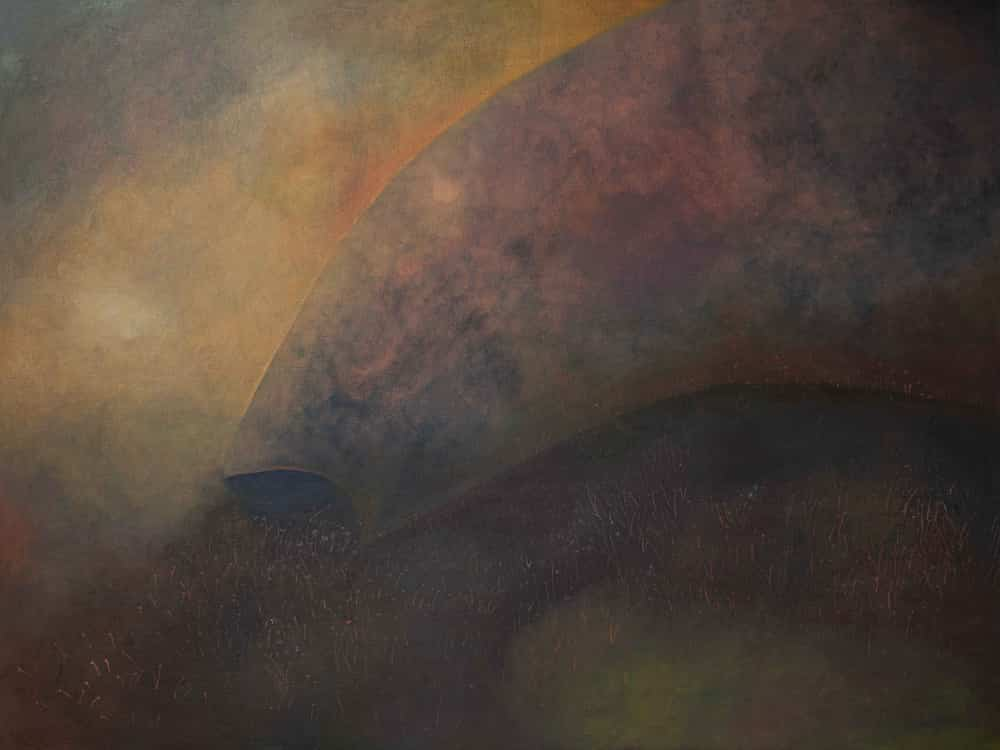

Kothi - V, 2022
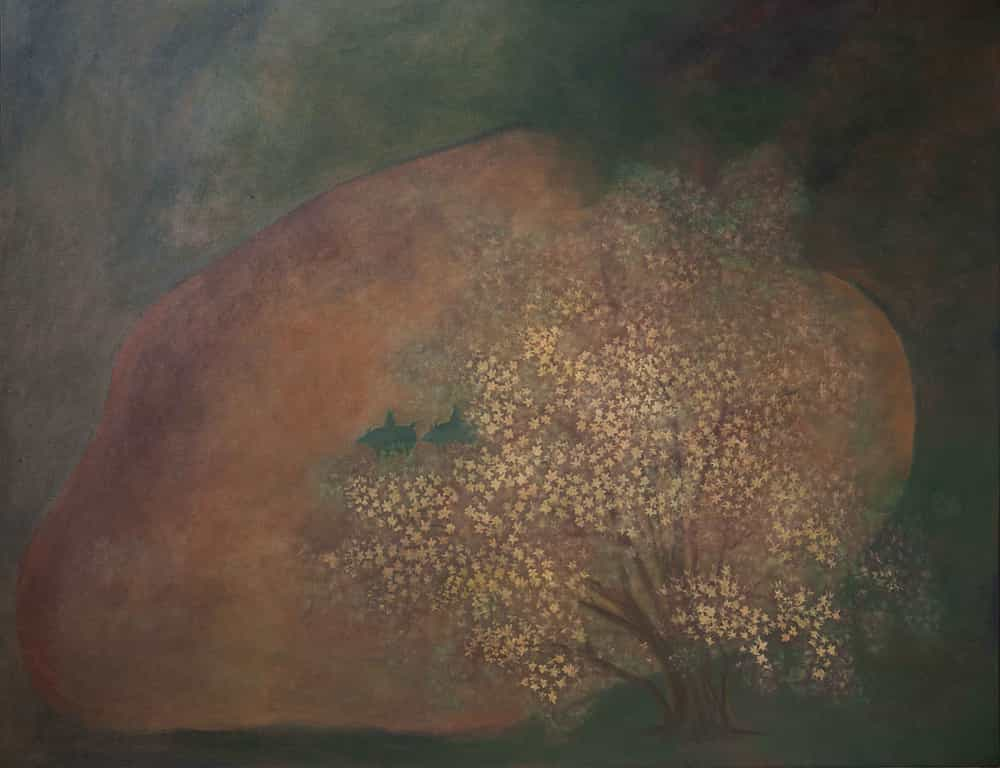

Boar 6, 2022
Sanjana - I remember your bio stating that you use humour in your work. How do you bring in that element?
Muskaan - I don't aim to explicitly convey a specific idea or restrict viewers to my own interpretation. Instead, I encourage people to engage with my work and form their own dialogues and connections.
For example, one of my clay sculptures called "Pumpking," created during my project room submission in October 2017, explores the concept of value or the lack thereof. The sculpture represents an average-sized pumpkin made out of clay and hay. The pumpkin, being a vegetable that is generally perceived as uninteresting and often used as a metaphor for stupidity, symbolises the notion of lacking value. The phrase "कुछ नहीं है तब कद्दू बनेगा" (When there's nothing, it will become a pumpkin) captures this sentiment.
The use of the term "Bumpkin" in connection with the pumpkin adds a humorous element. It implies that the pumpkin may appear insignificant or lacking in value, but it still holds a presence. This concept of value extends beyond the vegetable itself and delves into the politics of value in various layers. It explores the association of a stationary object, like a pumpkin, with the notion of value in human psychology.
Overall, my intention is to provoke thoughts and invite viewers to reflect on the complexities and politics of value. The incorporation of humour serves as a catalyst for engaging with these ideas and concepts.
Sanjana - So where are you right now? Where do you see yourself heading as an artist?
Muskaan - I am currently deeply curious about my own ideas and thought process within my current work context. Furthermore, I am eagerly anticipating the opportunity to explore these ideas in different social and geographical contexts.
Sanjana - Lastly, who are the artists who inspire you and why?
Muskaan - Firstly, my mentor and artist Atul Bhalla holds a special place in my list. I deeply appreciate the work of senior artist Shambhavi Singh, who hails from Bihar and explores the rural landscape, which resonates with my own experiences from childhood. Another artist who captivates me is Benitha Perciyal, known for her terracotta creations. Lastly, the works of Louise Bourgeois, particularly her sculptures centered around themes of protection and motherhood, such as the spider sculpture, have left a lasting impression on me.
View Tracing Value on Terrain.art.

